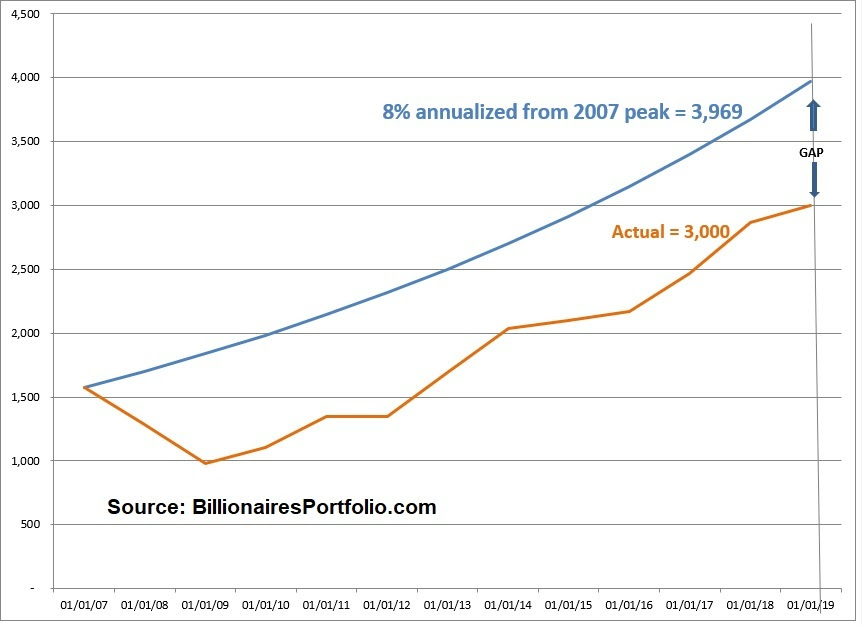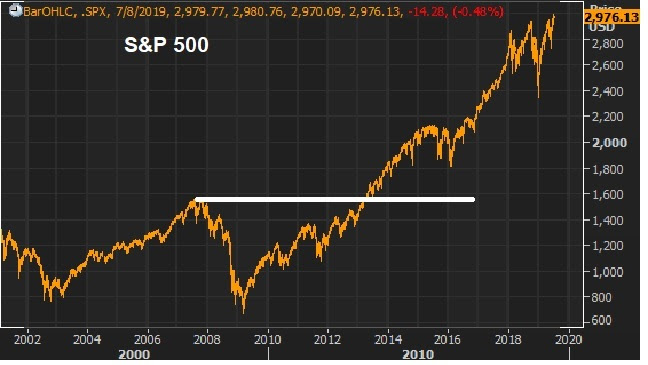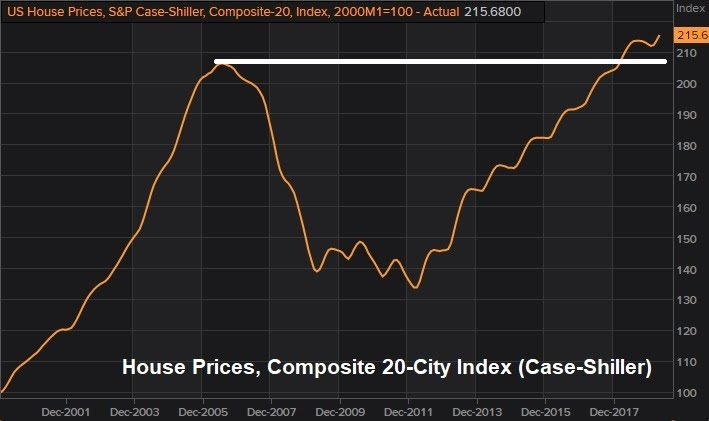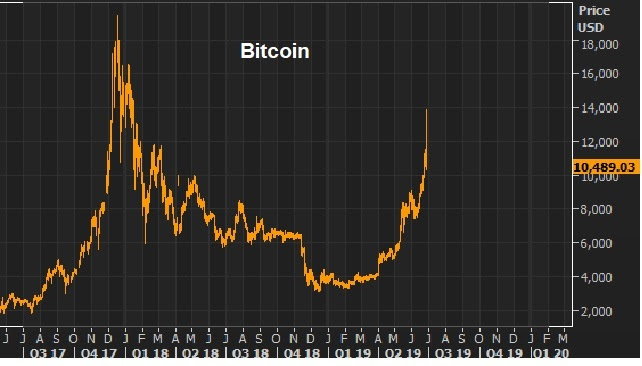Jerome Powell was on Capitol Hill today, with another opportunity to set expectations on what the Fed may or may not do on July 31.
He didn’t disappoint. In the Fed Chair’s prepared remarks, he acknowledged that the “crosscurrents” (i.e. risks to the economic expansion) have reemerged (after moderating earlier in the year). That’s code for, we don’t know how long Trump is going to holdout on a trade deal, and we will give the markets (and Trump) what they are asking for: a rate cut at the month’s end.
The table was set in June for the Fed to cut rates. They held off, in anticipation of the big Trump/Xi meeting that took place at the end of June. A deal would have meant the Fed was off the hook – no rate cuts. As we know, they (Trump/Xi) kicked the can down the road. That reset the timeline on the trade war to indefinite.
And that sets the table for a response from the Fed.
In the absence of an indefinite trade war, are rates too tight in a 3% growth economy with unemployment under 4%. No.
But the Fed appears ready to capitulate in Trump’s game of chicken. The market is forcing its hand. With a 2% 10-year yield, the interest rate market is pricing in economic slowdown, deflationary pressures, aggressive monetary stimulus and maybe military war — all stemming from the perception of an indefinite trade war. Those signals are threats to business and consumer confidence, the linchpin of the economy.
Game of chicken? Remember, Trump
As we’ve discussed, with a rate cut under his belt, expect Trump to pull the trigger on ‘a’ deal, and then turn back to Congress to launch the next pillar in Trumponomics — a $2 trillion infrastructure spend. Who killed the infrastructure negotiations back in May? Trump. Who can turn it back on? Trump. Again, he creates fights where he can control the outcome.
If you haven’t signed up for my Billionaire’s Portfolio, join now — get your risk free access here.






